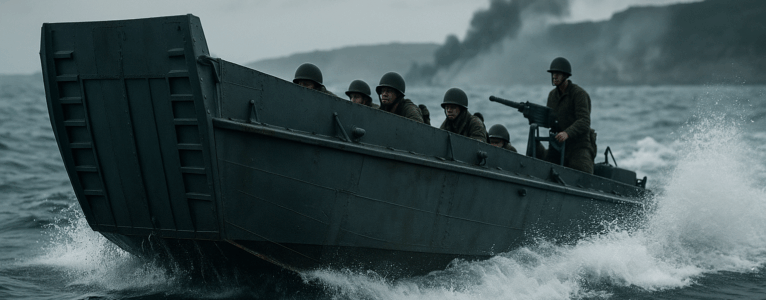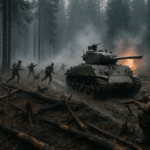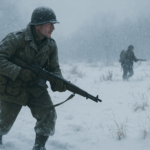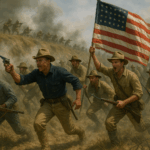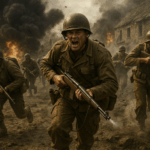When history books tell the story of World War II, the spotlight often falls on the soldiers who stormed beaches, the generals who commanded armies, and the political leaders who shaped global strategy. But sometimes, victory hinges not just on the bravery of men in uniform or the genius of a tactician, but on the ingenuity of a stubborn inventor with a vision.
One such man was Andrew Jackson Higgins, a shipbuilder from New Orleans who never set foot on a battlefield, yet whose contribution to the war effort was so critical that General Dwight D. Eisenhower, Supreme Commander of the Allied Expeditionary Force, famously said:
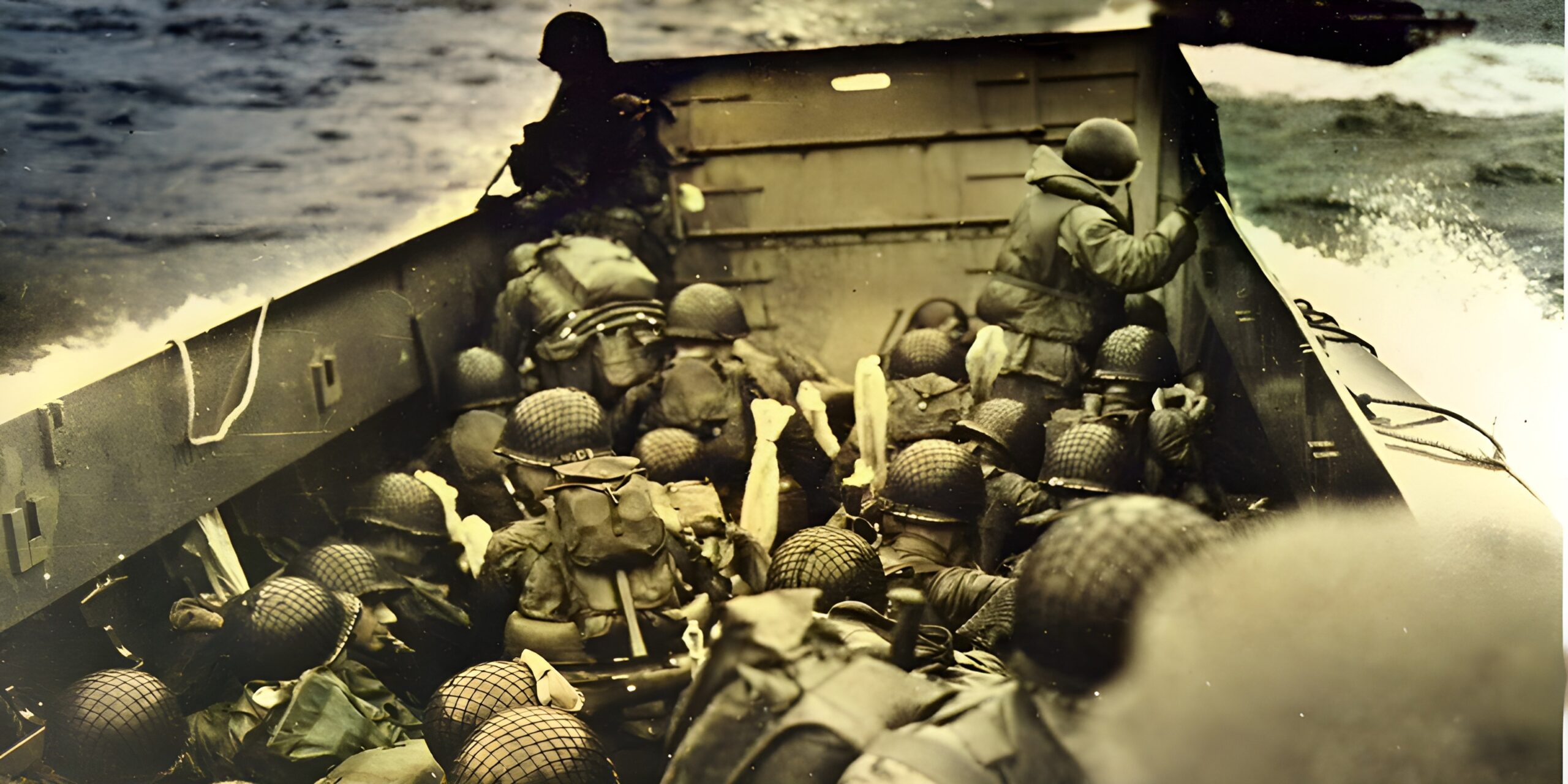
Andrew Higgins … is the man who won the war for us. If Higgins had not designed and built those LCVPs, we never could have landed over an open beach. The whole strategy of the war would have been different.
From Lumberyards to War Rooms
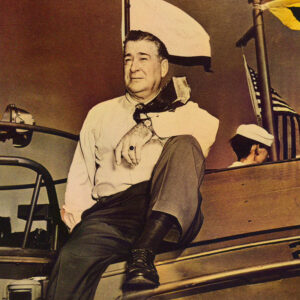
Born in 1886 in Columbus, Nebraska, Higgins was a fiercely independent businessman who made his fortune building shallow-draft boats for loggers and oilmen navigating the swamps and marshes of the American South. These boats needed to be agile, tough, and able to run up on sandbars or through thick reeds without bogging down, traits that would later prove vital in wartime.
As global tensions rose in the late 1930s and the United States began preparing for possible involvement in World War II, Higgins realized that the military’s existing landing craft designs were woefully inadequate. The Navy and Marine Corps were relying on clunky boats that forced soldiers to jump over the sides, a death sentence under enemy fire. Higgins had a better idea, inspired partly by Japanese ramp-bowed boats seen in China.
The LCVP: Simple, Rugged, Revolutionary
Higgins’ solution was the Landing Craft, Vehicle, Personnel (LCVP), now known simply as the Higgins boat. Flat-bottomed, steel-ramped, and constructed of plywood with a reinforced steel frame, the LCVP could carry a platoon of 36 troops, a Jeep and a squad, or over 8,000 pounds of cargo. Most importantly, it featured a drop-down bow ramp, allowing troops to rush directly onto the beach.
The boat was built to operate in just three feet of water, could be launched from larger ships, and was simple enough to be mass-produced quickly and cheaply. What looked like a humble wooden boat would soon become the tip of the Allied spear in every major amphibious assault.
Higgins Industries: An Arsenal of Innovation
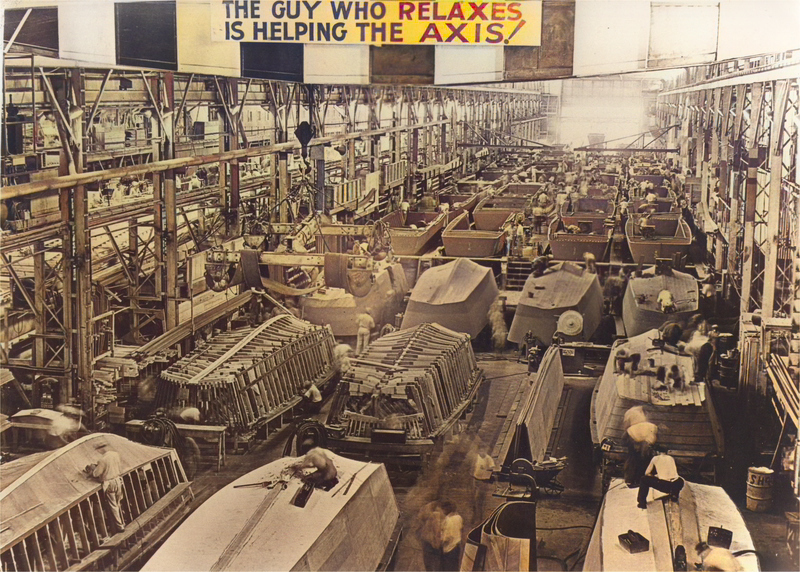
Once the U.S. entered the war, Higgins scaled up his operations with astonishing speed. By 1943, Higgins Industries had over 30,000 employees, producing not just LCVPs but a wide array of landing craft, PT boats, and support vessels. His factories operated around the clock, pouring out over 20,000 Higgins boats by the end of the war, boats that would land troops in North Africa, Sicily, Normandy, the Pacific Islands, and beyond.
Higgins’ workforce was as revolutionary as his boats. He actively integrated his factories, employing women, African Americans, and other minorities at a time when segregation was still the law of the land in much of the United States.
“I don’t care if he’s black, white, yellow or has polka dots on him,” Higgins once said. “The only thing I care about is: Can he do the job?“
This bold stance not only helped ease labor shortages but challenged social norms and set a precedent for the postwar civil rights movement.
The Test of Fire: D-Day and Beyond
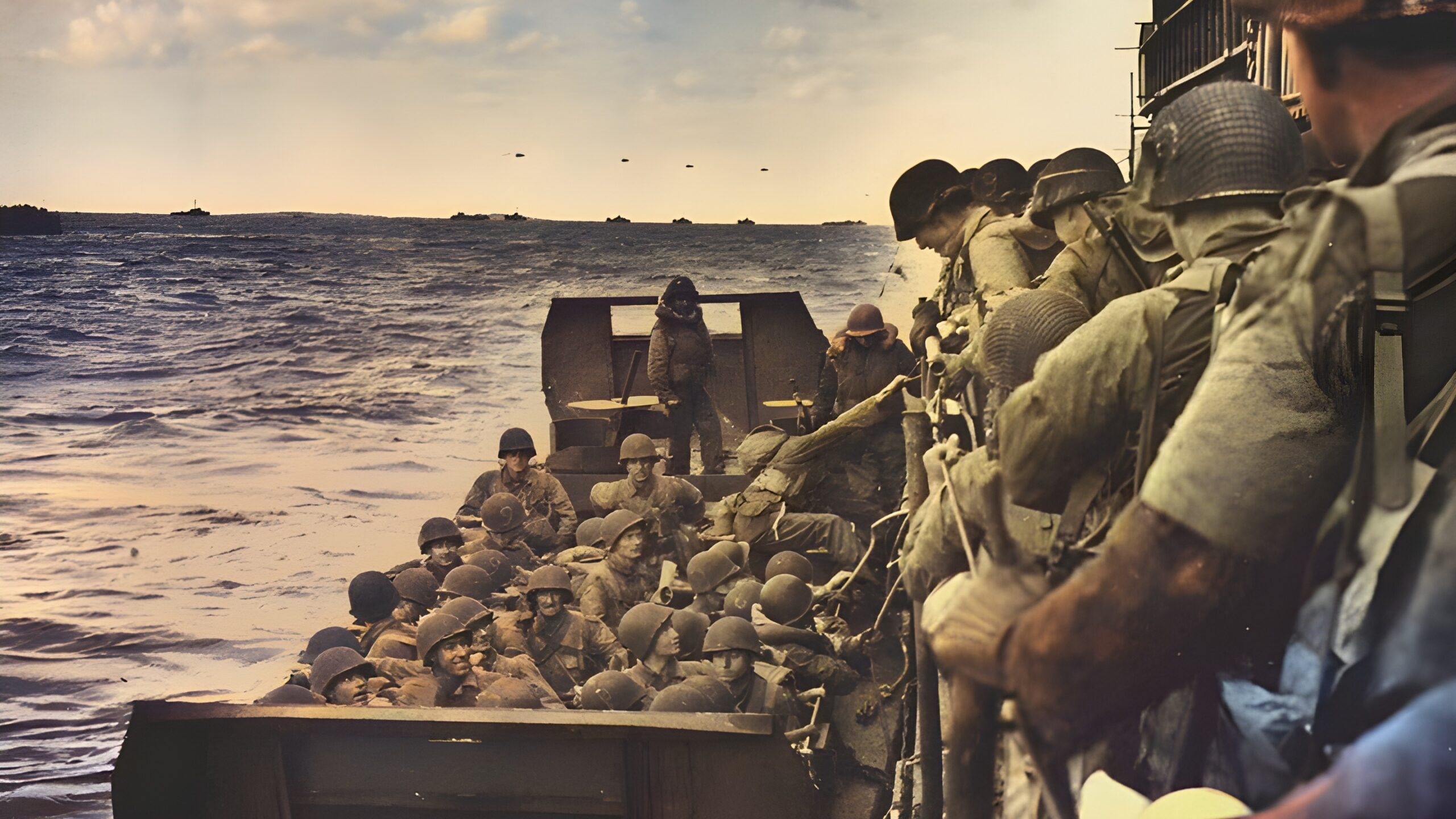
Perhaps the most iconic moment for the Higgins boat came on June 6, 1944, D-Day. In the pre-dawn hours, thousands of LCVPs splashed into the cold waters of the English Channel, each carrying soldiers from the U.S, Britain, and Canada toward the heavily fortified beaches of Normandy.
Many of the most famous photographs and film footage from D-Day, soldiers charging off ramps into waist-deep water, bullets slicing through the air , are images of men stepping off a Higgins boat.
But this was just one chapter. Higgins boats were used in every theater of war, making amphibious warfare not only possible, but effective. They allowed the Allies to strike where the enemy was weakest, to bypass fortresses, and to deliver rapid, mobile, and overwhelming force on hostile shores.
A Man of Many Battles

Despite his enormous contributions, Higgins wasn’t always popular with the military brass. He clashed often with Navy officials over designs, contracts, and production bottlenecks. His fiery personality and disdain for red tape made him a controversial figure, but also one who got results.
He famously bet against the Navy’s prototype landing craft and offered to prove his boat was better. After a dramatic head-to-head demonstration on Lake Pontchartrain, his LCVP came out on top, and earned the green light for full-scale production.
Legacy and Recognition
Andrew Higgins passed away in 1952, but his legacy lives on. His boats reshaped modern warfare and made it possible for Allied forces to fight and win a global war across oceans. Today, a replica LCVP is on display at the National WWII Museum in New Orleans, a fitting tribute to a man who turned a regional shipyard into one of the war’s most critical industrial powerhouses.
But his legacy stretches far beyond American shores.

Another LCVP stands as a silent sentinel outside the Utah Beach Museum in Normandy, just yards from where the first waves of American soldiers landed on D-Day. The sight of it, bow ramp down, flanked by sand and sea grass, is a visceral reminder of the craft’s role in liberating Europe. Visitors walking across the sands of Utah Beach today can witness first hand the engineering marvel that carried the 4th Infantry Division ashore, opening the road to victory.
These preserved vessels are more than museum pieces, they are monuments to ingenuity, courage, and a quiet revolution in how wars are fought and won.
President Eisenhower’s remark about Higgins isn’t an exaggeration, it’s a rare admission from a military leader acknowledging that the tide of war can turn on innovation, not just courage.
Final Thoughts: The Hidden Architect of Victory
Andrew Higgins didn’t wear a uniform. He didn’t lead men into battle. But without his vision and determination, many of those men would never have reached the battlefield at all.
He represents the unsung heroes of war, the inventors, builders, and risk-takers who work behind the scenes but change the course of history. In a time when America needed to think big, move fast, and build even faster, Andrew Higgins answered the call with grit, genius, and an unstoppable work ethic.
So the next time you see those haunting images of troops landing under fire, remember the man behind the ramp, the man who helped carry an army across oceans, and into victory.

